by Mike Constanza
At first glance, even the best slowpitch softballs can seem rather inexpensive compared to bats, gloves, and shoes. But you can't do with just one of these softballs for slow pitch. You probably need a dozen of them for games, and you may need more for practice.
They may not last all that long either, which means the total cost of the softballs will add up over the course of a season. At least with good gloves and bats, you can enjoy them for at least one season. That's not really true with a softball.
But aren't all softballs the same? That's not really true. You may have different balls for different leagues. That's why we have discovered some best slowpitch softballs for your next league or practice sessions.
Contents
| Image | Product Name | Price |
|---|---|---|
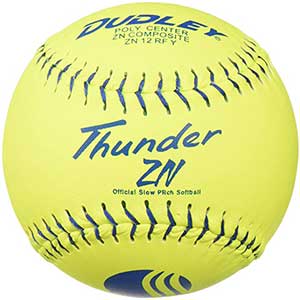 | Dudley USSSA Thunder ZN Slowpitch Classic M Stamp Softball | Price Check |
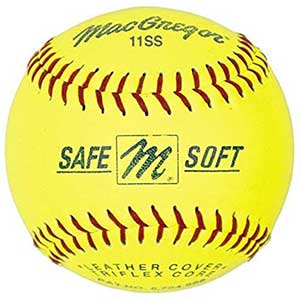 | MacGregor Safe/Soft Training Softballs | Price Check |
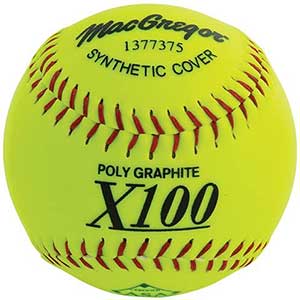 | MacGregor X52RE ASA Slow Pitch Synthetic Softball, 12-Inch | Price Check |
 | Franklin Sports Practice Softballs - Official Size and Weight Softball | Price Check |
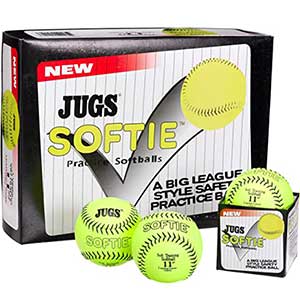 | Jugs Softie Practice Softballs | Price Check |
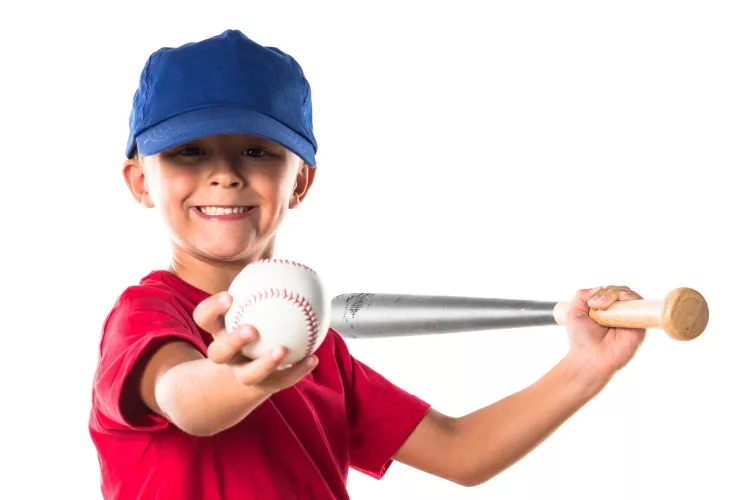

Ask any softball player (or any baseball player, for that matter), about what they dream about when they play the game, and chances are it's about hitting the game-winning home run. Even a regular home run is fun, as the player trots around the bases unhurriedly while teammates wait at home plate to celebrate.
With this softball, you're most likely to see that dream come true if you're the hitter. These balls absolutely fly. Not that there's something wrong or unfair about this ball, either. It's actually the Classic M softball, that's why it is considered as the best usssa slowpitch softballs.
The key to its flying capability is its design and materials. The polyurethane core offers lots of oomph when a player hits the ball. The composite cover is also extremely thin so that the force reaches the core a lot faster.
It's not only the hitters who love this softball, either. Fielders like them too, as long as they don't go into homerun territory. The neon color is easy enough to track as it flies or when it lies on the grass. It's also comfy to handle, so fielders and pitchers won't have trouble throwing the ball.
Replace the softballs you generally use for your games, and everyone in both teams will appreciate it. It's just that good, and it makes everyone play better. Everyone hits harder and fields more accurately, and that makes everyone feel good and enjoy the game.
Buy this for practice games as well, so your team has a fairly good idea of real game conditions. In addition, these balls can still work for batting practice even when they're worn down after too many games.

Lots of coaches say that regulation balls aren't all that good for practice. After all, in a real game, the ball won't be hit as often as your practice softballs. Regulation balls may also be too hard for younger players, who may not like to play the game if they're hit even once by a practice ball.
Besides, the regulation balls are just so expensive compared to non-regulation practice balls. Buying regulation balls for practice seems the opposite of cost-effective.
So for practice, why not get these soft and safe training softballs from MacGregor? They're perfect for your budget, as they're not very expensive. What's more, these slowpitch balls are extremely hardy and they're designed to last for a long time.
This is great for developing players when you get them practicing their fielding drills. They're able to concentrate on what they have to do, and not worry so much about the resulting pain if they're ever hit by the softball. With the Tri-Flex safety core, the softball isn't as hard as a regulation ball.
The leather cover is also terrific for fielding drills. They're easier to grasp, and fielders are able to make better catches and throw more accurately. The "feel" of the ball is also similar to what a regulation softball offers.
You should also consider the use of this ball for indoor use. Because the ball is quite soft, it won't damage the gym floors or walls.
All in all, your players will prefer to practice with these softballs as they develop their skills. With the softness, great feel, general hardiness, and terrific price, they're the best slowpitch softballs for practice.

The normal rule for softball teams is to use real regulation softballs for actual games and to use cheaper balls for practice. That usually means using different balls, and that can be problematic when switching from practice to real games. The different balls used can feel too unfamiliar.
But now you have ASA-approved slow pitch softballs, that you can use for practice as well. These are quite inexpensive, and the price by the dozen is very reasonable.
These balls can really fly, and that's the truth. That's great for batting practice, and they make for very exciting games too. It's such a great feeling for hitters to see the ball go out much farther.
Its durability is something that you'll also admire. These are very hardy softballs, and they can hold their shape and features even after multiple hits. Batting practice can be quite fun when your players hit more home runs, and you can get them back and reuse them.

Sometimes when you're unsure about what to buy, you may just want to trust whatever others are buying. This may not be a good idea all the time, but it works with these Franklin Sports slowpitch softballs for practice. These are the bestsellers in their category. Part of the reason for its popularity is undoubtedly the low price, but that's not all that it has going for it.
What this practice softball is meant for is to help you (if you're the coach) to train your players to develop their fielding skills. With the bright yellow hue, your players are able to track the ball nicely in the air or as it bounces on the field. The softball is easy to see, whether it's daytime or you're playing under the stadium lights. You'll see it easily when it's on the field.
The flat seams also help with fielding practice. That's because the flat seams reduce the friction the ball fights against as it's thrown in the air. That means it travels through the air more smoothly, and your fielders can throw farther.
Since the ball has the right size and weight, your fielding practices can translate to actual games. You're also able to develop your players' movement skills as they learn to field their position. Game conditions won't feel too different even when you use the regulation balls.

What can possibly be a good reason to spend more money on practice softballs? These practice slowpitch softballs from Jugs perfectly explain why you just might do that for your softball team.
First of all, these are similar to regulation balls in many ways. They come in the same 11-inch and 12-inch sizes. The leather on the cover is genuine, and so is the stitching. It feels the same when a player fields it and hits it. That means the skills develop during practice can translate to actual games because the balls feel the same.
Still, there's a real softness to these softballs that you'll appreciate as the coach. At the very least, these won't damage your aluminum bats. That's always a real concern during batting practice. Some coaches tell their players to use different bats for batting practice, but then when during the actual game the aluminum bat doesn't feel as familiar. With these balls, they're able to use the same bats.
Also, your school won't mind if you practice your fielding indoors. The slowpitch softballs are literally soft enough not to leave scuff marks on the gym floors.
Finally, these softballs can last an entire season. So that means it's probably a cost-effective option. You won't have to buy replacements for your softball practice balls too often.

This may seem like a softball making a repeat appearance on this list since we've already listed the Dudley USSSA Thunder ZN Slowpitch Classic M Stamp Softball. Yes, this is USSSA-certified and also count as the best usssa slowpitch softballs , like the earlier Dudley on this list. These two even cost exactly the same.
This has the same precisely blended cross-linked polyurethane at the core. This core gives you the pop you want to make the softball fly off the bat. The seams are flat, and these lessen the friction as the ball travels through the air. It's very resilient and quite dense.
But if you look more closely at the name, there's a small difference that actually translates to a very different performance. That's because the earlier model is the ZN. This is the SY model. These names denote the material for the cover. Dudley used ZN composite material for the ZN. This SY slowpitch softballs have synthetic material for the cover.
What this means is that the cover here actually looks nicer. The feel of the synthetic is also great. Finally, the ZN is meant mainly for hot weather. For colder places, the SY offers better performance.
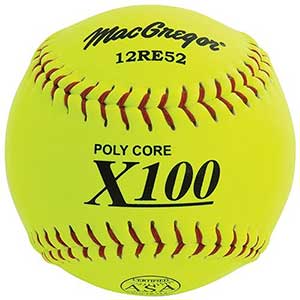
This is another best slowpitch softball that you might think was inadvertently repeated. After all, it's another X52RE ASA Slow Pitch softball from MacGregor. Even the size is the same at 12 inches.
That's because this comes with a composite cover. The composite is actually an upgrade on the synthetic cover. Only real leather on the cover is the best. Still, the composite offers a nice feel while it helps to make the ball more durable. The force of the bat also reaches the core more efficiently, so your players can really make the ball fly when they hit this.
This comes with a nice yellow color that's hard to miss, in daylight or under stadium lights. Players can track the ball nicely and find it easily enough on the grass.
Also, the flat seams allow for more efficient throws. The air friction is minimized so players can throw the balls farther.
The good news is that these softballs are very durable, while they're also reasonably priced. That means you're able to use them for practice without denting your budget too much. Your team can then practice with the same softballs they use for actual games. That surely helps, as they won't have to adjust to different balls after practice and with real league games.

We've already listed the synthetic and composite versions of this softball on this list, and this is the leather version. The synthetic is good, the composite is better (in some ways), and the leather is the best.
The leather cover here is terrific because it offers a surer grip for your pitchers and fielders. They're able to throw more accurately because of a certain grip. With the flat seams, the softballs travel greater distances and the surer grip means that the fielders are better able to throw the ball where they want it to go.
In addition, the cover is very hardy. These slow pitch softballs are often used for men's leagues and they hold up very well.
This comes with a lot of pop and makes some other softballs seem like nerf balls. The compression remains steady, whether it's warm or cold where you're playing. The lower compression is also great for your aluminum bats. These bats won't have to suffer dents in practice. You won't have to require your players to use different bats for batting practice.
If you want the best slowpitch softballs, you really should take a look at this one. It's basically the same softball the pros use.
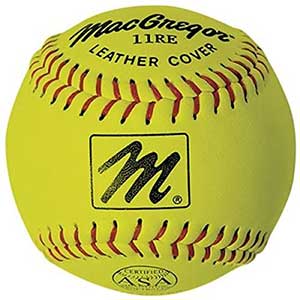
If your league complies with ASA regulations, then just do everyone a favor and get this ball. After all, it's ASA-approved. However, all the players will approve of this as well. You may even get them for practice since they're inexpensive compared to other softballs.
The leather cover offers a terrific feel for your fielders. It makes the ball harder as well, so it can stand up to practice drills.
The leather cover is also great for the pitchers, especially with the raised seams. These seams can let the softball go in more unpredictable directions, which can make the game more challenging to hitters.
The higher compression rating here indicates the hardness of the softball, which means this is likely to fly farther. That's also great for hitters, who understandably like to hit one out of the park.
All in all, coaches, batters, fielders, and pitchers love these best slowpitch softballs collection as it is approved by the ASA.
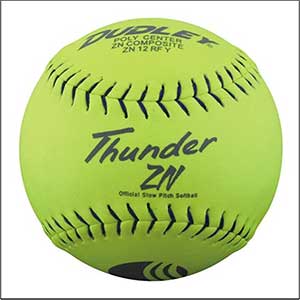
With men's softball leagues, you need tough softballs that won't get demolished the first time a burly hitter smashes it. This is the softball you need since it's the official ball of the men's conference of the USSSA.
With its compression rating of 450, this is truly a very hardball. That bodes well for its durability. Also, it means that this ball will really fly. That's why it's meant for stadiums-you need larger places to keep the ball in the ballpark.
The composite cover is also great, as it lasts longer than the synthetic cover. In addition, the ZN composite allows the force to travel quickly to the core.
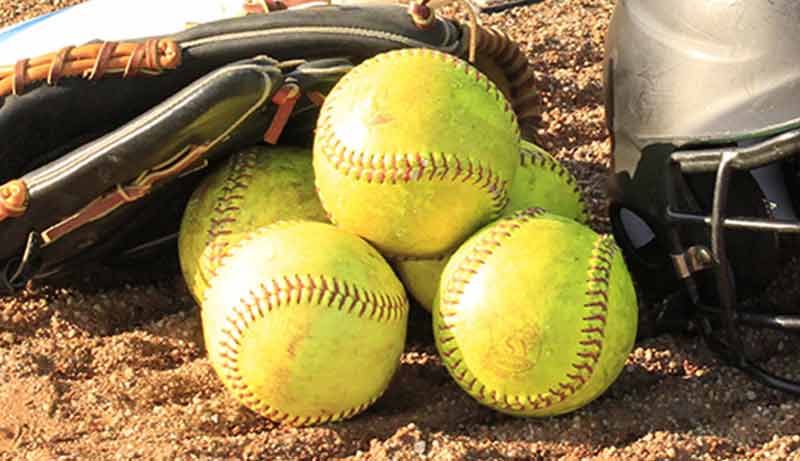
It's best to check the specs of the best slowpitch softballs, just to make sure you know what you're getting. You can then get the size along with the technical specs that can tell you how the softball will perform.
You should check out customer reviews as well, to give you a more accurate overall view on the quality of the softball. Customers tend to offer more objective assessments.
When you read the specs and reviews, pay particular attention to the following factors:
Most softball teams don't have unlimited budgets, so if you're in charge of buying the softballs then you have to pay attention to the price. You have to understand that higher-quality balls will cost more.
However, you can get significant discounts if you buy by the dozen. Sometimes you can cut down the price by $1 per ball.
The type of ball you get will surely affect the cost of the softball.
These will be the most expensive. These are the best slowpitch softballs you use for actual games.
The best way to check if your slow pitch softballs are allowed for play is to look for the logo of the organizational body that your league follows. Many softballs are stamped with the logos of groups such as the United States Specialty Sports Association (USSSA), the National Softball Association (NSA), and USA Softball.
Just remember that your ball must also comply with your league rules concerning COR, compression, and softball size.
These have no seams but instead have large dimples. These are specifically made for automatic pitching machines because softballs with seams can cause damage to the pitching machine.
These are meant for softball pitchers. These training softballs are heavier than regulation balls, and that helps pitchers to develop their arm strength. Often these come in blue or green colors, to differentiate them from the regulation game balls.
These are the cheap softballs made with low-quality materials. They're basically just for batting and fielding practice.
Also called "non-traditional" softballs, these are mainly for younger kids. These balls are softer on the outside, which can minimize the injuries and pain if the ball hits a player accidentally. The special design makes these slowpitch softballs as expensive as regulation softballs.
The slow pitch softballs you buy for game use must conform to the COR and compression ratings set by your league. These ratings are generally printed on the softballs, which the umpire will check. If the right markings aren't there, then the umpire won't allow the use of the ball.
The compression rating can be 275, 350, 400, or 525 pounds. Sometimes the "pounds" are left off, but you know these are for the compression. This rating indicates the amount of force needed (in a number of pounds) to compress the softball by ¼ of an inch.
A higher compression rating indicates a harder core inside the softball. It means the ball is more likely to go farther when it's hit.
The COR rating stands for the coefficient of restitution. This will tell you about the bounciness or the liveliness of the ball. Typical COR ratings include 40, 44, and 52 (though in many cases they're listed as.40,.44, and.52).
The higher COR rating such as the 52 means the ball bounces more when it hits the bat, which means it leaves the bat more quickly and will go farther.
The size of the slow pitch softballs measures its circumference, and this can go from as large as 16 inches down to as small as 11 inches.
This is a very safe ball to use, which is why it's often seen in some wheelchair and senior slow-pitch softball games. The large softball doesn't go fast off the bat, and the slow speed increases the safety. In some games with 16-inch slow-pitch softballs, fielders don't use gloves.
This is more for recreational softball games, though some softball leagues allow this size of a softball. It's still safer than the smaller softballs since it's larger. The ball doesn't travel as quickly off the bat as the smaller softballs. In addition, the ball doesn't travel farther so it's less likely to be lost beyond the wall.
This is the standard ball size used for slow pitch and fastpitch softball. Youth players generally start using this ball when they're 10 years old.
In some coed games, this is the size of the ball used to pitch to male players while the ladies use the smaller softball. This offers gender parity to account for the greater average strength of the guys.
This is normally the smallest softball-size you'll see in a game. It's used for female batters in coed games because it travels faster and farther than the 12-inch slow-pitch softballs.
In some cases, the ball is used for players 9 years old and younger. That's because the smaller size of the softball offers a better fit with the children's small hands.
The cover of the slow pitch softballs for slow pitch may be made from either authentic leather or synthetic material. The natural leather is generally more expensive, but then it offers more advantages. Lots of players go for real leather because they have a more certain grip, and you'll notice this more in wet conditions. Natural leather also lasts longer on average than synthetic leather.
You'll want a high-quality seam on the slow pitch softballs to make sure they don't unravel too quickly. Fielders and pitchers tend to prefer raised seams on the cover. They get a surer grip when catching and throwing the ball, and pitchers find it easier to put a spin on the softball.
The manufacturer may put in rubber, cork, polyurethane, or a combination of these materials in the core. These result in various COR and compression ratings. Some materials, such as high-density polyurethane, can help make the ball last a lot longer.
Lots of practice balls come in a different color, such as green or blue. This is especially true for the heavier-than-usual balls used for pitcher training. That's so you can tell them apart from the regulation slowpitch softballs, which have to be yellow according to NCAA rules.
However, there are different shades of yellow. Most players like the brighter hues, since they're easier to see on the field and in various lighting conditions. That makes them easier to hit for batters, and easier for fielders to find.

For the same reason, tennis balls are also yellow-you're able to see them better. This helps the batter hit the softball, and fielders are quicker to track the ball after a hit.
It makes for a better game, which is why the NCAA made bright yellow the official color of their softballs in 2002.
It's a safer option, especially in light of how softball fields are smaller than baseball fields. The bigger softball doesn't go as fast after a batter hits it, and players aren't able to throw the ball as hard as they would with a baseball. If the ball hits a player, the resulting injury won't be as serious.
That depends on what the team is using a softball for. In general, you should use regulation slow pitch softballs for actual games, and these must be certified for your league. You can also use non-regulation balls for batting and fielding practice.
That depends on the initial quality of the softball, and how many times it's been hit. Most good quality softballs can be hit many dozens of times before you need to replace it.
Cheaper slow pitch softballs may not last as long. These balls may develop dents or lose their shape more quickly. Seams are particularly more vulnerable. The seam thread may break or go loose, and a hole in the seam can get bigger.
It's time to replace the softball for games if you see nicks in the softball cover. However, these can still be used for batting practice.
It's not a softball game without a softball. For the best games and for productive practices, you need the best USA slowpitch softballs or the ASA approved softballs.
Find the best slowpitch softballs for your team, and you'll find them enjoying the game more. You'll also like how these balls can help your players develop their slow pitch softball skills!
Related article: How to Finding the Best Fastpitch Softball Bats for 10u
MacGregor X52RE ASA Slow Pitch Synthetic Softball, 12-Inch, Pack of 12 - Walmart Link
DUDLEY 12"" USSSA Thunder ZN Slowpitch Classic M Stamp Softball - 12 pack", yellow - Walmart Link
Macgregor X44Re Asa Slow Pitch Softball, 11-Inch (One-Dozen) - Walmart Link
Baden USSSA Classic M Synthetic Cover Slowpitch Softball 12" (One Dozen) - Walmart Link
Dudley12" USASB Thunder Hycon Slowpitch Synthetic Softball - 12 Pack - Walmart Link
Dudley 12" USASB Thunder Hycon Leather Slowpitch Softball - 12 Pack - Walmart Link
MacGregor X52RE ASA Slow Pitch Composite Softball, 12-inch - One Dozen - Walmart Link
DUDLEY 11"" USSSA Thunder SY Slowpitch Classic W Stamp Softball - 12 Pack", yellow - Walmart Link
Dudley Thunder Advance 12" Slow Pitch Softball - Composite Cover - Pack of 12 - Walmart Link
Dudley Thunder Usasb Synthetic Slow Pitch 11 Inch Softball 12 Ball Pack - Walmart Link
MacGregor X52RE ASA Slow Pitch Synthetic Softball, 12-Inch, Pack of 12 - eBay Link
DUDLEY 12"" USSSA Thunder ZN Slowpitch Classic M Stamp Softball - 12 pack", yellow - eBay Link
Macgregor X44Re Asa Slow Pitch Softball, 11-Inch (One-Dozen) - eBay Link
Baden USSSA Classic M Synthetic Cover Slowpitch Softball 12" (One Dozen) - eBay Link
Dudley12" USASB Thunder Hycon Slowpitch Synthetic Softball - 12 Pack - eBay Link
Dudley 12" USASB Thunder Hycon Leather Slowpitch Softball - 12 Pack - eBay Link
MacGregor X52RE ASA Slow Pitch Composite Softball, 12-inch - One Dozen - eBay Link
DUDLEY 11"" USSSA Thunder SY Slowpitch Classic W Stamp Softball - 12 Pack", yellow - eBay Link
Dudley Thunder Advance 12" Slow Pitch Softball - Composite Cover - Pack of 12 - eBay Link
Dudley Thunder Usasb Synthetic Slow Pitch 11 Inch Softball 12 Ball Pack - eBay Link

About Mike Constanza
For years, Mike had always told everyone "no other sport like baseball." True to his word, he keeps diligently collecting baseball-related stuff: cards, hats, jerseys, photos, signatures, hangers, shorts (you name it); especially anything related to the legendary player Jim Bouton.
Mike honorably received Bachelor of Science degree in Business Administration from University of Phoenix. In his graduation speech, he went on and on about baseball... until his best friend, James, signaled him to shut it.
He then worked for a domain registrar in Phoenix, AZ; speciallizng in auction services. One day at work, he saw the site JimBouton.com pop on the for-sale list. Mike held his breath until decided to blow all of his savings for it.
Here we are; the site is where Mike expresses passion to the world. And certainly, he would try diversing it to various areas rather than just baseball.
 |
 |
 |
 |